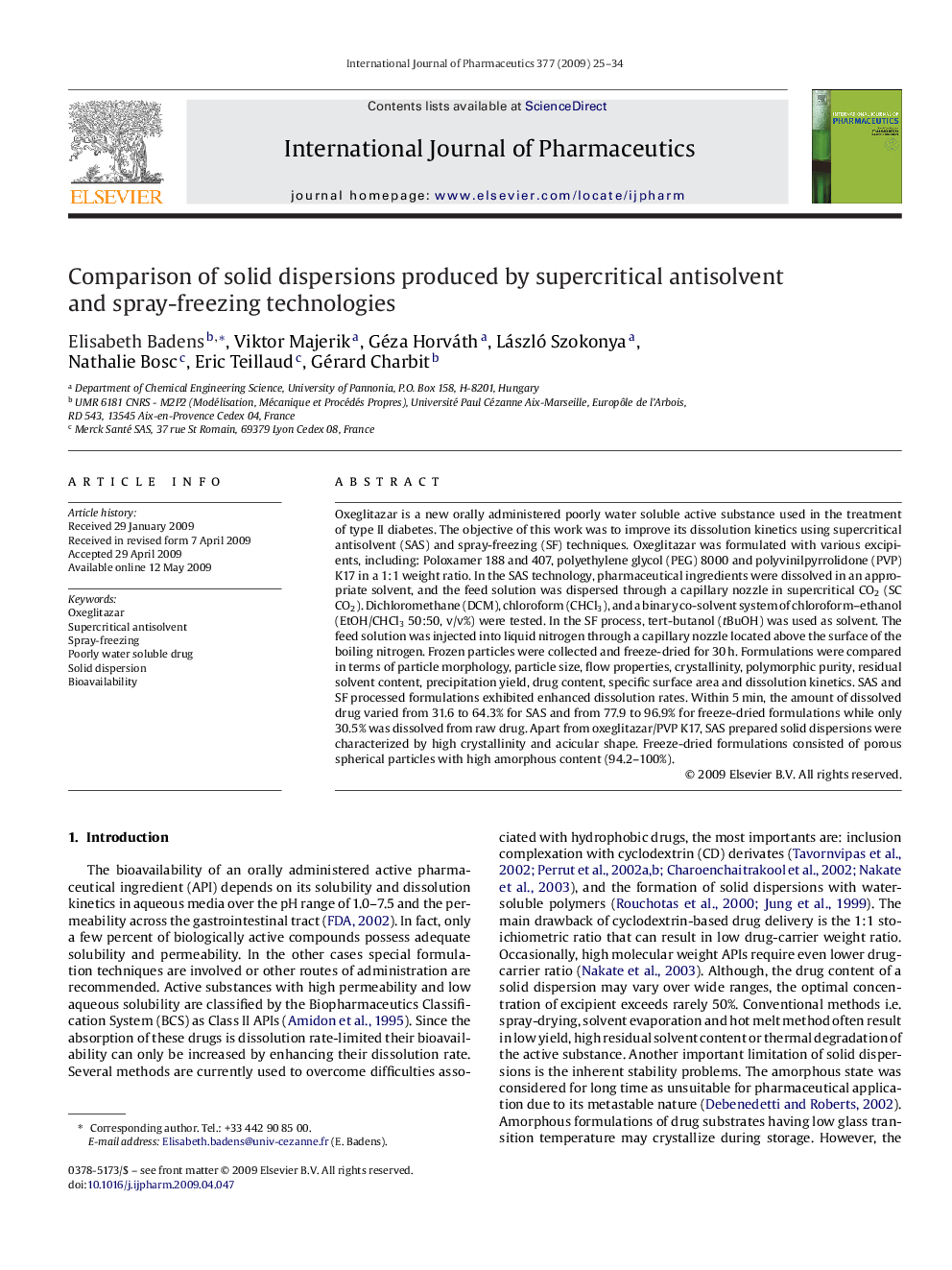| کد مقاله | کد نشریه | سال انتشار | مقاله انگلیسی | نسخه تمام متن |
|---|---|---|---|---|
| 2504778 | 1557468 | 2009 | 10 صفحه PDF | دانلود رایگان |

Oxeglitazar is a new orally administered poorly water soluble active substance used in the treatment of type II diabetes. The objective of this work was to improve its dissolution kinetics using supercritical antisolvent (SAS) and spray-freezing (SF) techniques. Oxeglitazar was formulated with various excipients, including: Poloxamer 188 and 407, polyethylene glycol (PEG) 8000 and polyvinilpyrrolidone (PVP) K17 in a 1:1 weight ratio. In the SAS technology, pharmaceutical ingredients were dissolved in an appropriate solvent, and the feed solution was dispersed through a capillary nozzle in supercritical CO2 (SC CO2). Dichloromethane (DCM), chloroform (CHCl3), and a binary co-solvent system of chloroform–ethanol (EtOH/CHCl3 50:50, v/v%) were tested. In the SF process, tert-butanol (tBuOH) was used as solvent. The feed solution was injected into liquid nitrogen through a capillary nozzle located above the surface of the boiling nitrogen. Frozen particles were collected and freeze-dried for 30 h. Formulations were compared in terms of particle morphology, particle size, flow properties, crystallinity, polymorphic purity, residual solvent content, precipitation yield, drug content, specific surface area and dissolution kinetics. SAS and SF processed formulations exhibited enhanced dissolution rates. Within 5 min, the amount of dissolved drug varied from 31.6 to 64.3% for SAS and from 77.9 to 96.9% for freeze-dried formulations while only 30.5% was dissolved from raw drug. Apart from oxeglitazar/PVP K17, SAS prepared solid dispersions were characterized by high crystallinity and acicular shape. Freeze-dried formulations consisted of porous spherical particles with high amorphous content (94.2–100%).
Journal: International Journal of Pharmaceutics - Volume 377, Issues 1–2, 30 July 2009, Pages 25–34